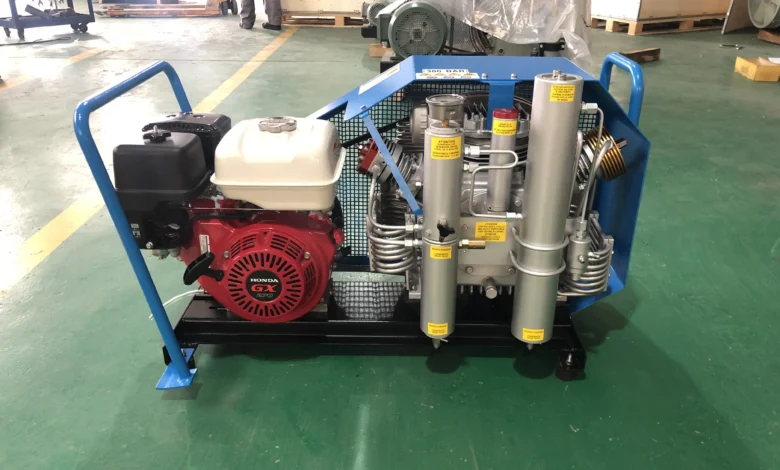How Does a Breathing Air Compressor Differ from a Regular Compressor?

Air compressors serve many purposes, from powering tools to providing breathable air for scuba diving and firefighting. However, the difference between breathing air compressors and regular compressors lies in the quality of air they produce. Breathing air compressors deliver purified, contaminant-free air that meets strict safety standards, while regular compressors are not designed for breathing applications.
What is a Breathing Air Compressor?
A breathing air compressor is a high-pressure system that supplies clean, breathable air. It is commonly used in:
- Scuba Diving – Filling tanks with purified air.
- Firefighting – Providing air for self-contained breathing apparatus (SCBA).
- Industrial Applications – Supplying clean air in confined or hazardous environments.
These compressors include advanced filtration systems to remove harmful contaminants like moisture, oil, and carbon monoxide.
What is a Regular Air Compressor?
A regular air compressor compresses air for non-breathing applications such as:
- Powering Tools – Operating pneumatic tools in workshops.
- Industrial Processes – Supplying air for machinery.
- Home Use – Inflating tyres and powering small devices.
Regular compressors do not include the necessary filtration to produce air suitable for breathing.
See also:
Key Differences Between Breathing Air and Regular Compressors
Air Quality and Filtration
- Breathing Air Compressors: Use multi-stage filtration to remove moisture, oil, and harmful gases, ensuring air is safe to breathe.
- Regular Compressors: Lack adequate filtration, making the air unsafe for respiration.
Pressure and Output Capacity
- Breathing Air Compressors: Operate at high pressures (3,000-4,500 PSI) to fill scuba tanks and SCBA systems.
- Regular Compressors: Operate at lower pressures (90-150 PSI) for powering tools and equipment.
Compliance with Safety Standards
- Breathing Air Compressors: Must meet standards such as AS/NZS 2299.1 and EN 12021 for safe breathing air.
- Regular Compressors: Not designed to meet breathable air standards.
Oil vs. Oil-Free Operation
- Breathing Air Compressors: May be oil-lubricated or oil-free but always use advanced filtration to remove oil residues.
- Regular Compressors: Often oil-lubricated, posing contamination risks if used for breathing.
For those needing a breathing air compressor, it’s essential to choose one that meets strict safety standards.
Why You Should Never Use a Regular Compressor for Breathing Air
Using a regular compressor for breathing air can be life-threatening. It may introduce contaminants such as oil vapours, carbon monoxide, and moisture, leading to:
- Health Risks – Respiratory issues and carbon monoxide poisoning.
- Hypoxia and Poisoning – Dangerous conditions caused by contaminated air.
Key Components of a Breathing Air Compressor
- Filtration System – Removes dust, oil, and gases.
- Moisture Separators – Prevents water buildup.
- High-Pressure Cylinders – Handles pressures up to 4,500 PSI with safety valves to prevent over-pressurisation.
Maintenance and Servicing Differences
- Breathing Air Compressors: Require frequent filter changes, air quality testing, and regular servicing.
- Regular Compressors: Basic maintenance with no air quality testing required.
Final Word
Breathing air compressors and regular compressors may perform the same task of compressing air, but their applications are vastly different. For diving, firefighting, and other critical environments, only a breathing air compressor should be used. Investing in the right compressor ensures compliance with safety standards and protects lives by delivering clean, breathable air.







